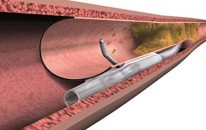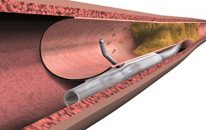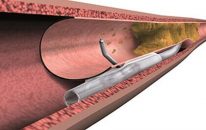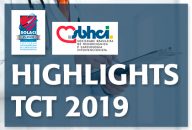We had to wait for it, but we have finally seen a benefit in hard endpoints—such as mortality—derived from rechanneling. Patients with chronic total occlusion (CTO) in whom rechanneling was used as initial strategy showed higher survival rated compared with those receiving medical therapy. As initial treatment strategy, rechanneling a CTO did not show any…
Should Total Occlusion Influence on Revascularization Strategy?
Success or failure of total occlusion (TO) revascularization does not affect mortality at 10 years, and this does not depend on revascularization strategy (PCI vs surgery) or location. The long-term clinical benefit of recanalization and PCI or TO artery bypass graft remains nuclear. This is a sub-study of the SYNTAXES (Synergy Between PCI With Taxus…
Suboptimal Recanalization Results Worse than Procedural Failure
This large cohort of patients undergoing PCI for chronic total occlusion has shown suboptimal recanalization is associated with cardiac death and myocardial infarction at long term compared against procedural failure. The link between acute outcomes and long-term events in recanalizations has been overlooked. Mainly when it comes to suboptimal results, is doing something more trouble…
Subintimal Re-Entry in CTO Improves Outcomes
Courtesy of Dr. Carlos Fava. Chronic total occlusions (CTO) are still one of the greatest challenges in our field, thus forcing the development of different complex strategies to resolve them. Additionally, the use of imaging techniques during these procedures has improved long-term results. The CONSISTENT CTO (Conventional Antegrade Versus Sub-Intimal Synergy Stenting in Chronic Total Occlusions)…
Subintimal vs. Intraplaque Coronary Rechanneling. Do Results Vary?
Coronary rechanneling is difficult by nature, and there are several techniques for it aimed at improving technical success. Some of these strategies entail the subintimal crossing of the occluded segment, while others entail intraplaque crossing, without leaving the true lumen. However, there is scarce or no information on the results of both strategies. Researchers analyzed…
TCT 2019 | FORZA: OCT vs FFR to Define Intermediate Lesions: Anatomy or Function?
Courtesy of SBHCI. Both fractional flow reserve (FFR) and optimal coherence tomography (OCT) can be useful to help define intermediate coronary lesions and optimize PCI outcomes. The FORZA study presented at San Francisco TCT 2019 scientific sessions simultaneously published in JACC randomized patients with intermediate lesions 1:1 to FFR vs OCT. For the FFR arm,…
TCT 2019 | EURO-CTO: Results at 3 Years of CTO Recanalization vs. Optimal Medical Treatment
Courtesy of SBHCI. Between 16 and 18% of coronary artery lesions in patients with chronic stable CAD are chronic total occlusions (CTO). CTO revascularization could benefit symptomatic patients, but it remains unclear whether such complex procedure is safe in the long run, given the study outcomes on PCI in CAD so far. This study presented…
Antianginal Medication Before and After Rechanneling
Escalation or de-escalation of antianginal medication was less common than treatment continuation without change after a chronic total occlusion rechanneling, with little variation according to the site. Further research is needed to identify patients who would benefit (or not) from these drugs and to develop strategies to adjust treatment during follow-up. This work basically tells…
EuroPCR 2019 | Intravascular Imaging Almost Indispensable for Planning an Angioplasty
Cost and time are the two main enemies of intravascular imaging, but lack of expertise may also play a role. A new European Association of Percutaneous Cardiovascular Interventions (EAPCI) expert consensus statement released at EuroPCR 2019 argues that there is a need for more use of intracoronary imaging in settings of acute coronary syndromes and…
In-Hospital Costs and Costs of Complications of Chronic Total Occlusions
Is a chronic total occlusion worth rechanneling? This question can often be found in different studies, all of them with clinical endpoints. This study (soon to be published in J Am Coll Cardiol Intv.) analyzes another aspect: costs, not only derived from materials used for a successful procedure, but also from materials and hospital stay…








